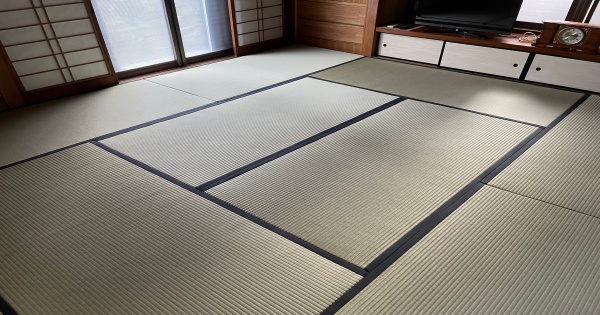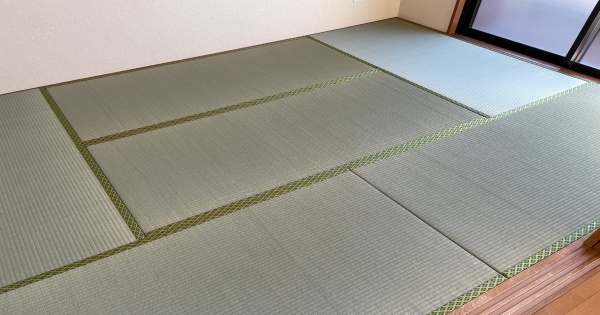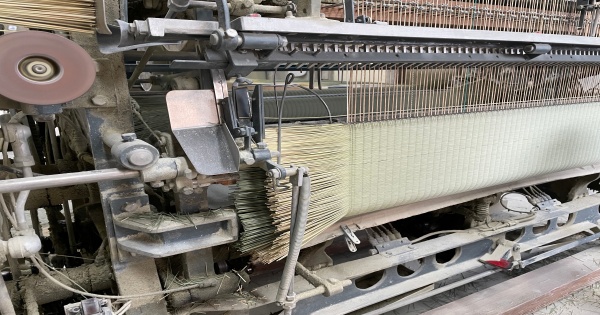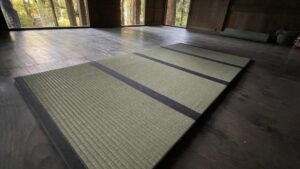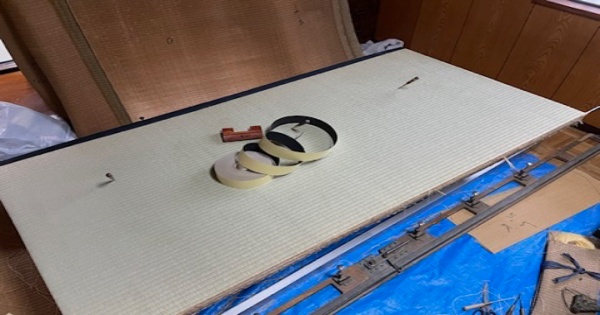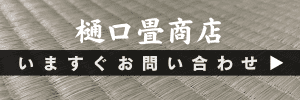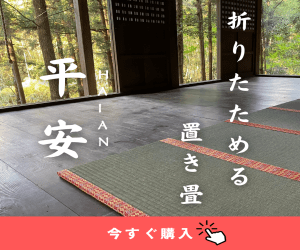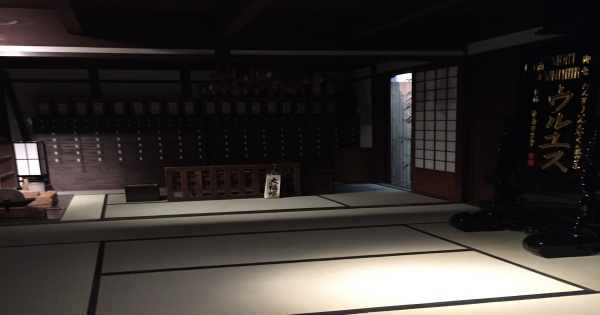
This time, I would like to introduce what a Japanese-style room (washitsu) is and what kind of room it is. This content is for those who are interested in the traditional Japanese room known as "washitsu."
What is a Japanese-Style Room (Washitsu)?

A Japanese-style room, or "washitsu," is a traditional Japanese room characterized by the use of tatami mats, fusuma sliding doors, and shoji paper screens. Washitsu rooms are deeply rooted in Japanese culture and lifestyle, offering a unique blend of simplicity and calm. Here is a detailed explanation of the elements that make up a washitsu.
Tatami
The floor in a Japanese-style room is covered with tatami mats. Tatami consists of an outer covering made from woven igusa (soft rush) and an inner core called the tatami-doko. The natural scent of tatami has a calming effect and gives the room a distinct atmosphere.
Fusuma
Fusuma are sliding doors made from a wooden frame covered in paper or fabric. They are used to divide rooms and come in a variety of designs, from simple patterns to elaborate paintings, playing a significant role in the aesthetics of a washitsu.
Shoji
Shoji are sliding screens made from wooden frames with translucent paper. They diffuse light softly into the room, creating a serene and tranquil ambiance. Shoji are a key element in the way a washitsu room interacts with light and shadows.
Tokonoma
The tokonoma is an alcove in the washitsu where decorative items like scrolls, flowers, or ornaments are displayed. It is considered a sacred space, and the decorations in the tokonoma change with the seasons or special occasions, adding elegance to the room.
Characteristics and Function of Washitsu
A washitsu room is both simple and profound. By incorporating natural materials, it allows people to feel connected to the changing seasons and the passage of time. Washitsu rooms are often used for tea ceremonies, calligraphy, and daily relaxation, serving various purposes in Japanese culture.
What exactly is a washitsu? As the name suggests, a "washitsu" is a "Japanese-style room," with "和wa" symbolizing Japan. In other words, it's a "Japanese room." But why does "和wa" represent Japan? Let's start by exploring this concept.
What is "和Wa"?
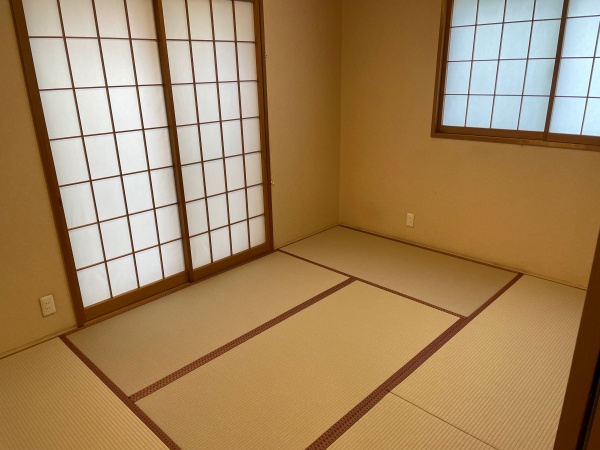
To understand this, we need to dive a bit into history. Let’s talk about Kojiki, a text compiled around 712 AD. Kojiki is a collection of Japanese myths, and it contains numerous references to Japanese culture.
One of these is the story of the Izumo no Kuni Yuzuri (the transfer of the land of Izumo). Since the story is quite long, I’ll briefly summarize it. If you're interested, I encourage you to read Kojiki for more details.
Ōkuninushi no Kami built a nation in the land of Izumo. However, he was commanded by Amaterasu, the deity ruling the heavenly world, to relinquish control of the land. In return, Ōkuninushi no Kami presented a condition: he asked to be enshrined in a magnificent palace, towering as high as the heavens (Takama-ga-hara). The response from the heavenly world was, "Sure!" A grand palace was built in the land of Izumo, and thus, Ōkuninushi no Kami peacefully ceded his land without conflict or war.
The grand palace that was constructed became what is now Izumo Taisha (Izumo Grand Shrine). Afterward, the name of the land became "Yamato," written as the "Great Land of Wa." (At this point, the character for "和Wa" was still written as 倭, but this was a name given by China. The Japanese later rejected it, feeling it was not fitting for the "Land of the Rising Sun.")
From the story of the Izumo no Kuni Yuzuri, we can infer that "Wa" symbolizes the "spirit of harmony"—a merging of cultures and beliefs without resorting to warfare or violent conflict.
Is a Washitsu a Room Created with the Spirit of Harmony?
A washitsu (Japanese-style room) is a space created through the fusion of natural and artificial elements. For example, take the tokobashira (decorative pillar).
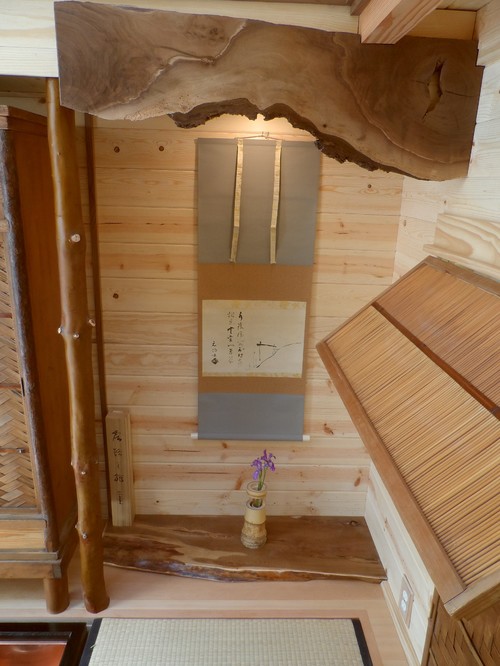
Oregon Cottage Company - リビングの写真はこちら - Houzz
It is used in its natural form, preserving the beauty of the wood with minimal alterations—usually just trimming the branches. Similarly, other elements like the floor or the ranma (transom) are often crafted by simply carving the wood in its natural shape.
As for tatami, the material used, igusa (rush grass), is woven in its natural form after being harvested. Tatami is another example of the harmonious blend of natural and artificial elements.
Washitsu: The Beauty of Imperfection
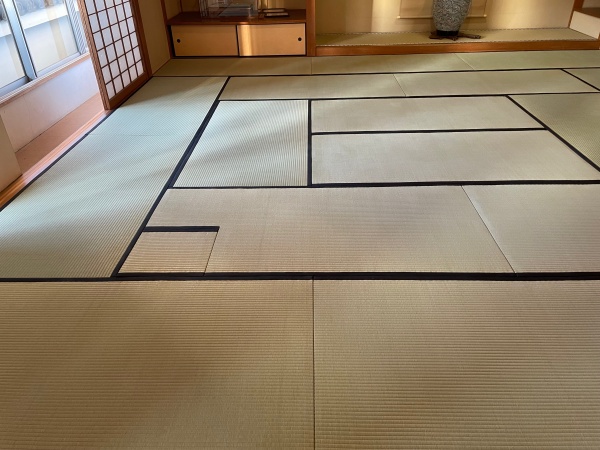
Why is the washitsu (Japanese-style room) such an incomplete space? I believe it has much to do with the idea of imperfection, something many Japanese have long pursued.
In the past, Japanese carpenters would intentionally leave a scratch on a fine pillar after finishing a house or temple. This was not out of malice, but to express the idea of imperfection. Similarly, Sen no Rikyū, the tea master who perfected the art of wabi tea, taught his disciples to appreciate the beauty found within imperfection. In one story, Rikyū once looked at a perfectly made tea bowl and remarked, "This is too perfect," and proceeded to chip it.
Figures such as Sei Shōnagon and Matsuo Bashō are also said to have cherished imperfection. But why have so many Japanese people sought beauty in imperfection?
I believe it's because we value the mindset of embracing and loving decay and deterioration. Perfection and completeness are not always the most beautiful things.
Just as cherry blossoms bloom in full glory only to scatter later, and the vibrant red of autumn leaves signals their impending fall, we Japanese may be projecting our own sense of imperfection onto the scenes around us.
In Conclusion
The "和wa" in washitsu also carries the meaning of "和むnagomu," which signifies calmness or tranquility. Today, most washitsu are used as peaceful and soothing spaces. In this article, I’ve written for an international audience about "what washitsu are" and "what kind of rooms they are." It brings me great joy to see washitsu used as spaces where people can find calm and relaxation. Personally, I believe it's not necessary to be overly concerned with the specific elements that make up a washitsu. Thank you for reading to the end.

